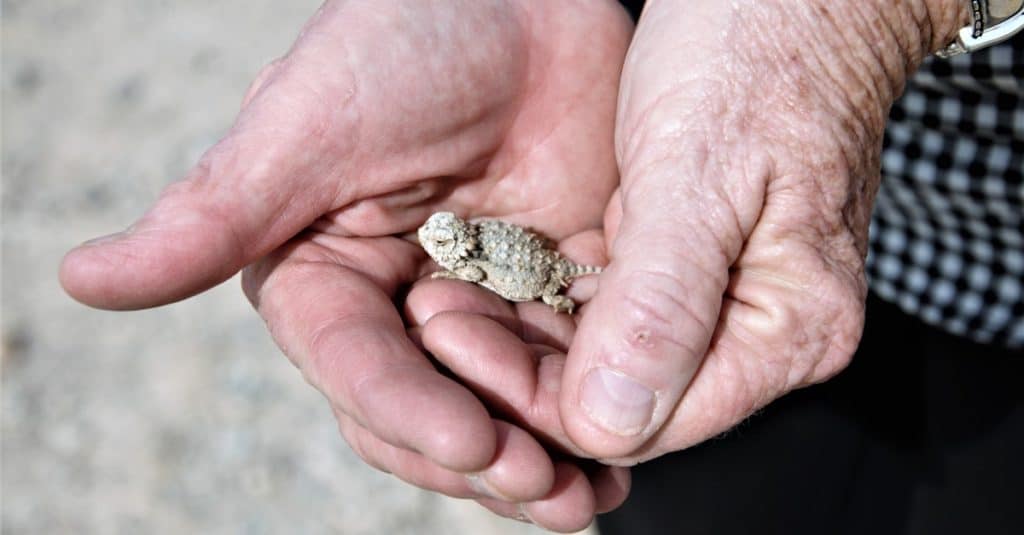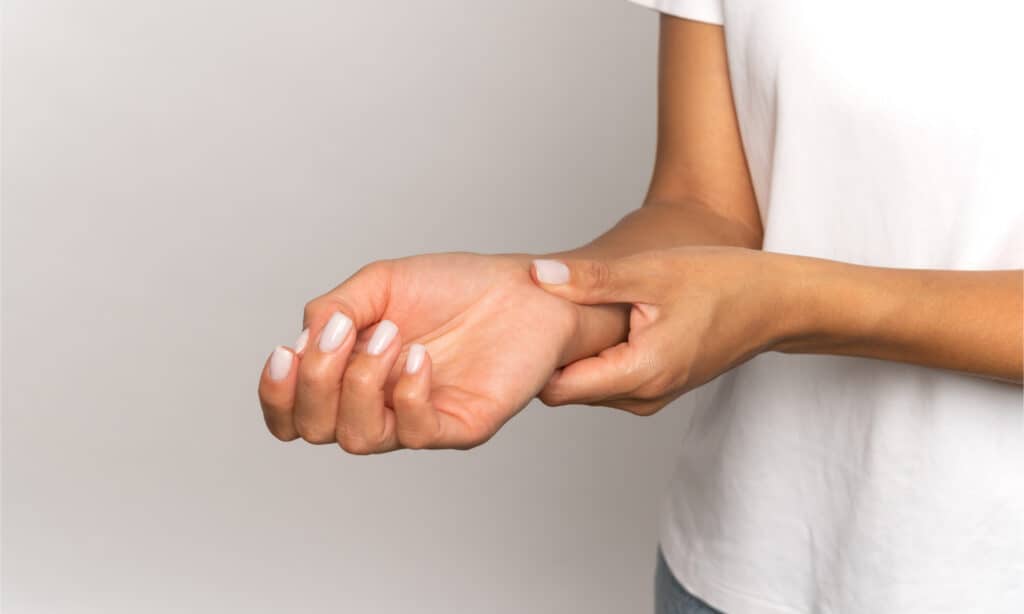The hand, as studied, is a prehensile, multi-fingered appendage attached to the end of the forearm of many primates like humans, monkeys, chimpanzees, and lemurs. Except for a few born with certain conditions, all humans naturally have hands, but not everyone knows much about their hands, let alone the number of bones.
As we delve into this article, we will be revealing interesting facts about human bones.
A Brief Anatomy of the Human Hand

The bones in the human hand would not function properly without muscles.
©Raymond Craig Johnson/Shutterstock.com
The human hand contains many muscles, tendons, ligaments, and sheaths. The bones would not be able to move or function properly without the muscles since the muscular structures make contraction possible. On the other hand, ligaments as fibrous tissues help bind the joints in the hand together, while the sheaths surround part of the fingers as tubular structures. As an essential part of the system, the tendons connect muscles in hand to the bone, which aids movement. The veins, arteries, and nerves provide sensation and blood flow to the hand and fingers.
Some vertebrates, like the koala, possess “hands” in place of “paws” on their front limbs because they have unique characteristics like two opposable thumbs and a very similar fingerprint to humans. The raccoon also has human-like hands but lacks opposable thumbs.
How Many Bones Do People Have in Their Hands?

There are 27 bones in the human hand.
©DimaBerlin/Shutterstock.com
The human hand has 27 bones working together for the proper functioning of the hand; 8 carpals, 5 metacarpals, and 14 phalanges.
What Are The Bones in the Hand Called?
The human hand consists of 3 major bone types: phalanges, metacarpal bones, and carpal bones.
Phalanges
The phalange comprises 14 bones that are present in each finger and also in the toes. Except for the thumb with only two, every other finger has three phalanges (distal, middle, and proximal).
Metacarpal bones
The middle bones of the hand consist of five bones called metacarpals.
Carpal bones
Similar to the metacarpal bones, carpal bones are the eight bones that make up the wrist. The two rows of carpal bones connect the wrists to the two bones of the arm.
What Bones are in the Wrists?

There are eight wrist bones.
©/Shutterstock.com
There are eight types of bones found in the human wrist, which include;
1. Scaphoid
The scaphoid, one of the carpal bones, is the largest bone situated in the wrist’s proximal row, linking two rows of wrist bones together. The scaphoid is mostly covered with cartilage contacting five other bones in the forearm and wrist.
When there’s a broken or fractured scaphoid, blood flow disruption occurs, leading to a difficult healing process due to the anatomy of the blood supply to the bones. Since the scaphoid is involved in the wrist’s movement, it is paramount that it remains intact for the proper interaction with other bones in the wrist.
2. Lunate
The lunate is located in the middle of the proximal carpal row and has a crescent side view shape. Like most wrist bones, the lunate is almost totally covered in cartilage, and due to the large cartilage surface, it permits excellent wrist movements. This bone is not commonly fractured but can be involved with wrist dislocation and rub against the ulna if the length supersedes the radius bone.
3. Trapezoid
This is a bone roughly shaped like a trapezoid found in the second row of wrist bones whose major function is to hold the metacarpal bones and index finger in place. The trapezoid wrist bone rarely suffers injury.
4. The Trapezium
The trapezium is found in the second row of wrist bones, where the thumb metacarpal connects directly to the wrist. This bone enables the thumb to move in multiple directions while stabilizing the thumb. However, it is easily fractured and suffers arthritic problems in hand.
5. Triquetrum
The triquetrum is located in the first row of wrist bones and beside the little finger. This bone actively adds stability to the wrist. Its name is coined from the Latin word “triquetrus” meaning “three-cornered.”
6. Capitate
The capitate is a large bone primarily located under the middle finger metacarpal bone at the center of the second row of wrist bones. Being an essential contributor to the wrist’s movement, the capitate wrist bone forms joints with many bones in the wrist and hand.
7. Hamate
This bone is large, unevenly shaped, and located in the second row of wrist bones. It functions similarly to other wrist bones while working with many wrist bones and serving as attachment points for multiple ligaments. The hamate holds the ring and little finger metacarpal bones in place. It can be injured, fractured, or broken in different ways but mostly gets bruised or broken when the hand is used for punching. A fracture can happen to the hook of the hamate when one falls or if struck directly, such as during games like baseball or golf.
8. Pisiform
The pisiform found within a tendon is a small sesamoid bone that sits in the wrist and the flexor carpi ulnaris tendon. It works similarly to other sesamoid bones to change the direction of pull of the tendon to which it is attached.
Is the Thumb Considered a Finger?
Yes, the thumb is considered a finger, even though it has been a controversial question. As the thickest and shortest digit in the human hand, the thumb, also known as the digitus primus manus or pollex, anatomically functions differently from the hand’s other four digits. Nevertheless, as long as it remains a part of the five terminal members of the hand, most medical practitioners will continually refer to it as a finger.
Who Has the Larger Skeletal Size and Bone Mass Between Males and Females?
In truth, men and women have the same number of bones, but males have a larger skeletal size and bone mass than females.
Interesting Facts about the Human Hand
- The nails on the fingers are modified hairs.
- After death, nails stop growing.
- The fingernails are a quick way to identify certain health problems like mineral deficiency, liver problems, and anemia.
The photo featured at the top of this post is © /Shutterstock.com
Thank you for reading! Have some feedback for us? Contact the AZ Animals editorial team.






